What is DFOS?
Distributed Fibre Optic Sensing is a means of using Optical Fibres to monitor for changes in strain, temperature, displacement or vibration.
Optical fibres contained in a flexible, protective composite material are fixed to a structure and read using an interrogator unit to measure and interpret reflected light along the fibre.
The use of long, continuous fibres rather than isolated sensors installed at regular intervals allows for precise, high spatial resolution monitoring throughout a monitored structure.
DFOS sensors can be manufactured to order in continuous lengths up to multiple kilometres, making them well suited for applications like rail and bridge monitoring.
In these applications, DFOS differs from monitoring using Fibre Gragg gratings and uses different principles to collect information about the health of the structure.
Whereas Bragg gratings are placed at specific points along the fibre and used to monitor particular spots, DFOS allows for an uninterrupted profile of strain along the sensor.
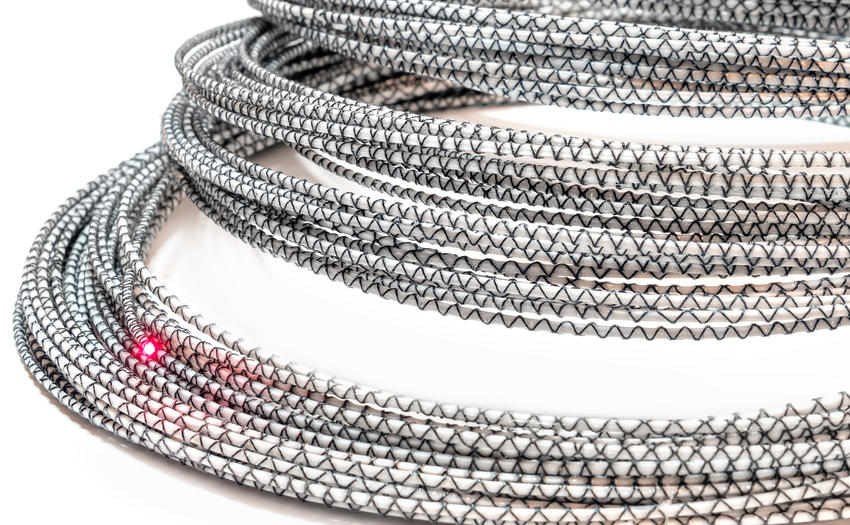
Principles
In all optical fibres various imperfections in the material cause a small amount of scattering of transmitted light throughout the length of the fibre. In most applications (e.g. telecommunications) this scattering is undesirable and efforts are made to minimise these imperfections.
However, in Distributed Fibre Optic Sensing these imperfections are a vital feature that create a unique, measurable pattern in the reflected light, similar to a fingerprint for the fibre. Measuring changes in this fingerprint over time allows interpretation of strain or other factors in the monitored structure.
Three common approaches based on different scattering phenomena are used to interpret the frequency and amplitude of the reflected light.
Interpretation of Rayleigh and Brillouin scattering are primarily used in measuring strain or temperature when compared to a recorded baseline. Raman scattering interpretation often used to supplement the other techniques, measuring temperature for thermal compensation purposes.
Each technique has key benefits and limitations that make them better suited for different applications.
• Rayleigh scattering – Used for measurement of changes in strain or temperature with high
spatial resolution.
• Brillouin scattering – Used for measurement of changes in strain or temperature over much
longer distances with lower spatial resolution.
• Raman scattering – Used for measurement of temperature, effective over extremely long
distances.
The same sensors may be used for all techniques but different reflectometers/interrogators may be required in order to collect the necessary data.
Combining multiple parallel optical fibres into one sensor and analysing the differential strain allows for detailed 3D displacement to be calculated along the composite sensor.
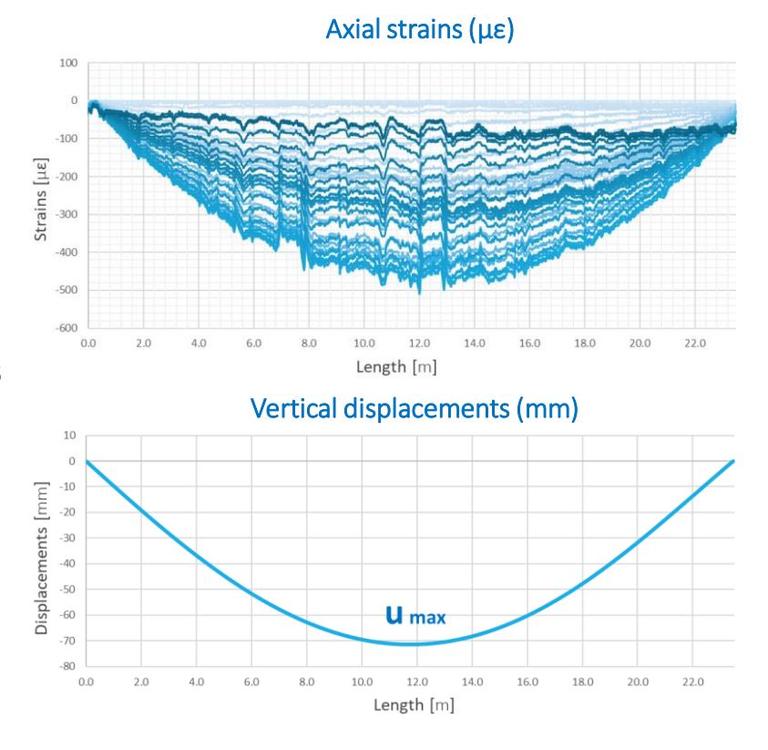
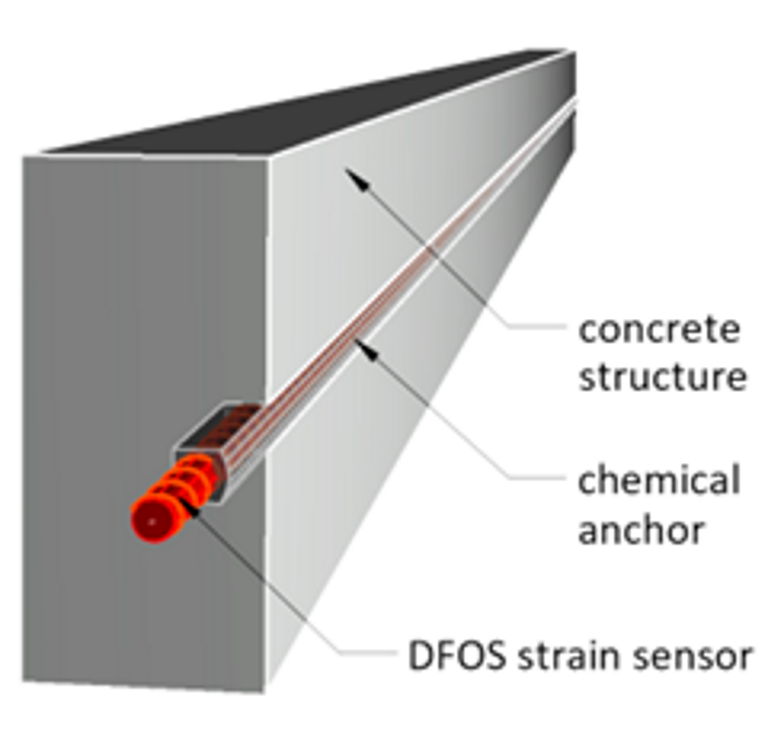
Advantages of DFOS
• High Resolution, Long Distances.
The primary advantage offered by DFOS is the ability to observe the distribution of measured factors over the entire length of the sensor, potentially over many kilometres.
The method gathers significantly more, higher resolution information than other, more targeted approaches, enabling a comprehensive understanding of the health of the monitored structure.
DFOS measurements can be considered as geometrically continuous for the purposes of analysis, meaning large arrays of conventional strain gauges can be replaced with a single optical sensor.
• Non-Invasive Installation
Installed DFOS sensors can be relatively unobtrusive and depending on the application, can even be embedded into the structure. A common example of this is crack monitoring of concrete during loading.
Optical fibres feed directly into the data logger and require no further electrical or signal cabling as they are both the sensor and signal cable. Because they carry no charge, the sensors themselves can also be considered Intrinsically safe, meaning they are usable in some hazardous environments where other sensors are not.
• Damage Detection
Detection of changes along the entire length of the sensors enables the detection of structural issues or damage in unexpected areas that spot sensors may miss.
Comprehensive assessment of the monitored structure's mechanical behaviour can provide identify locations of local events like leakages, sinkholes, cracks or fractures.
DFOS gives the potential of early diagnosis of issues, reducing risk of damage or failure.
• Cost Efficient
As singular sensors can cover very long distances and have long lifespans (up to several decades), DFOS monitoring can potentially provide significant cost savings over other methods of structural health monitoring.
Sensors are durable and are not susceptible to electrical or electromagnetic influences.
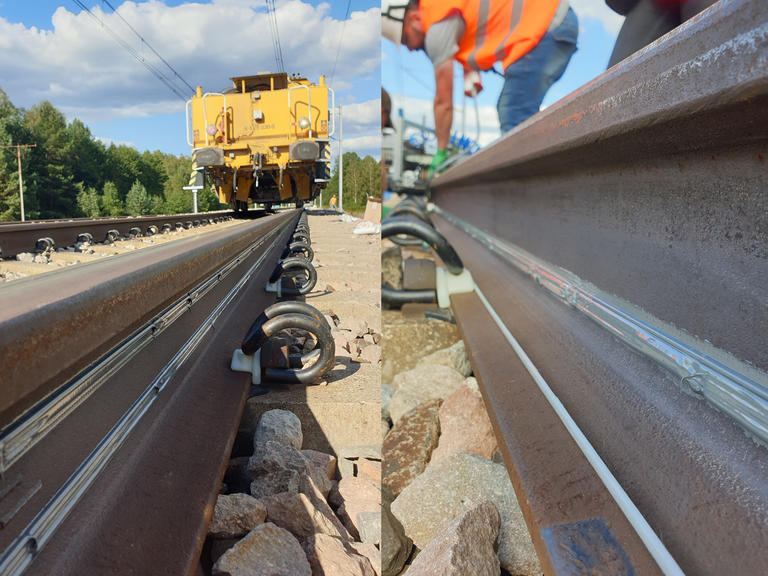
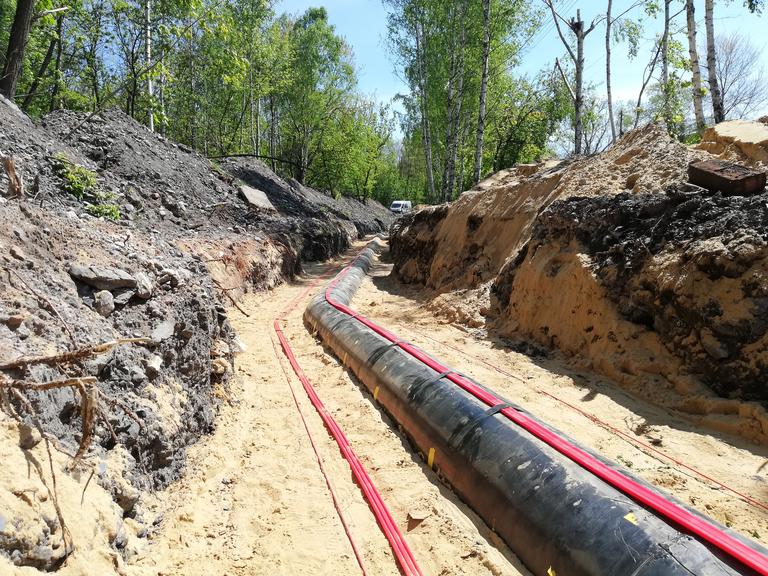
Applications
Depending on the intended use DFOS sensors come in different types suited for varying conditions and purposes.
In many situations the ideal solution is a lightweight, flexible sensor comprised of an Optical Fibre and a composite core that protects the fibre while allowing for accurate transfer of strain and good bonding with the monitored structure (e.g. via a chemical anchor).
Variant sensors designed for installation in concrete can have much higher strength and stiffness and can be used to reinforce the structure, similarly to rebar.
Combined sensors incorporating multiple optical fibres in parallel enable the calculation of displacements over the length of the sensor in three-dimensional space.
DFOS systems are particularly suited for installation over long distances, like in road or rail monitoring, but are also useful for small sections of focused monitoring in safety critical areas.
Used widely on various projects across Europe, types of structures that have effectively employed DFOS include monitoring of bridges, pipelines, road embankments, railways and load testing.
